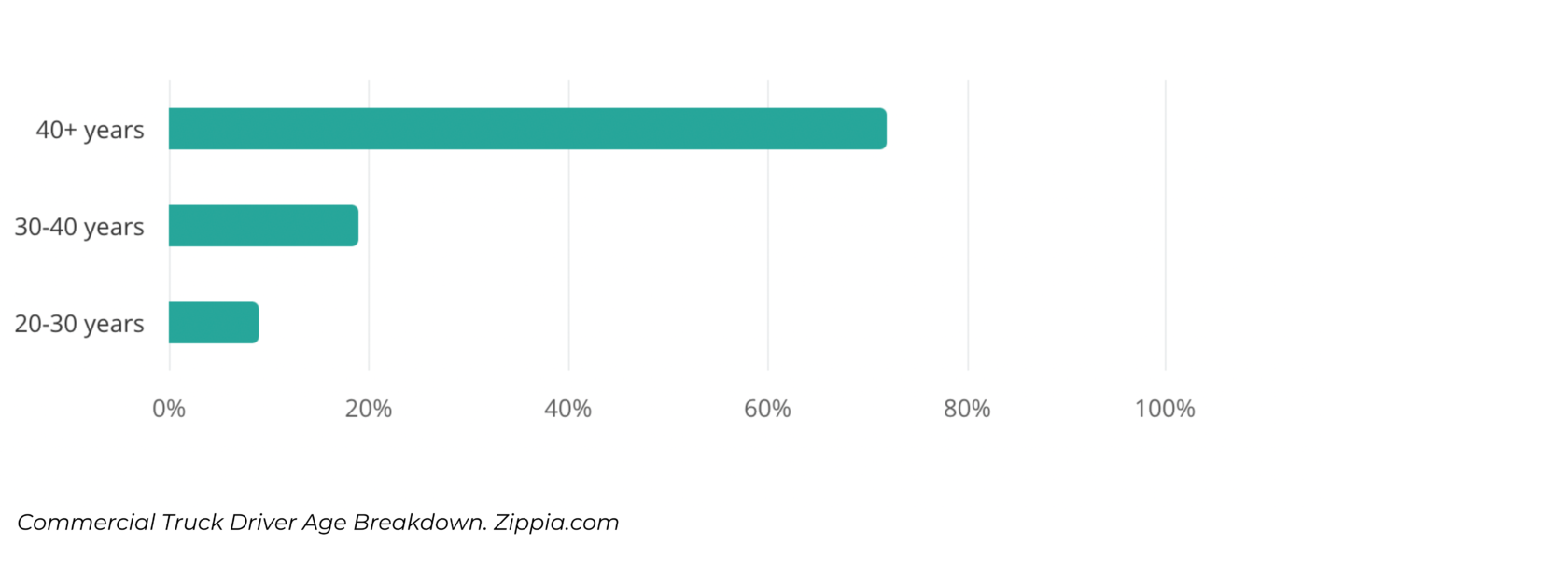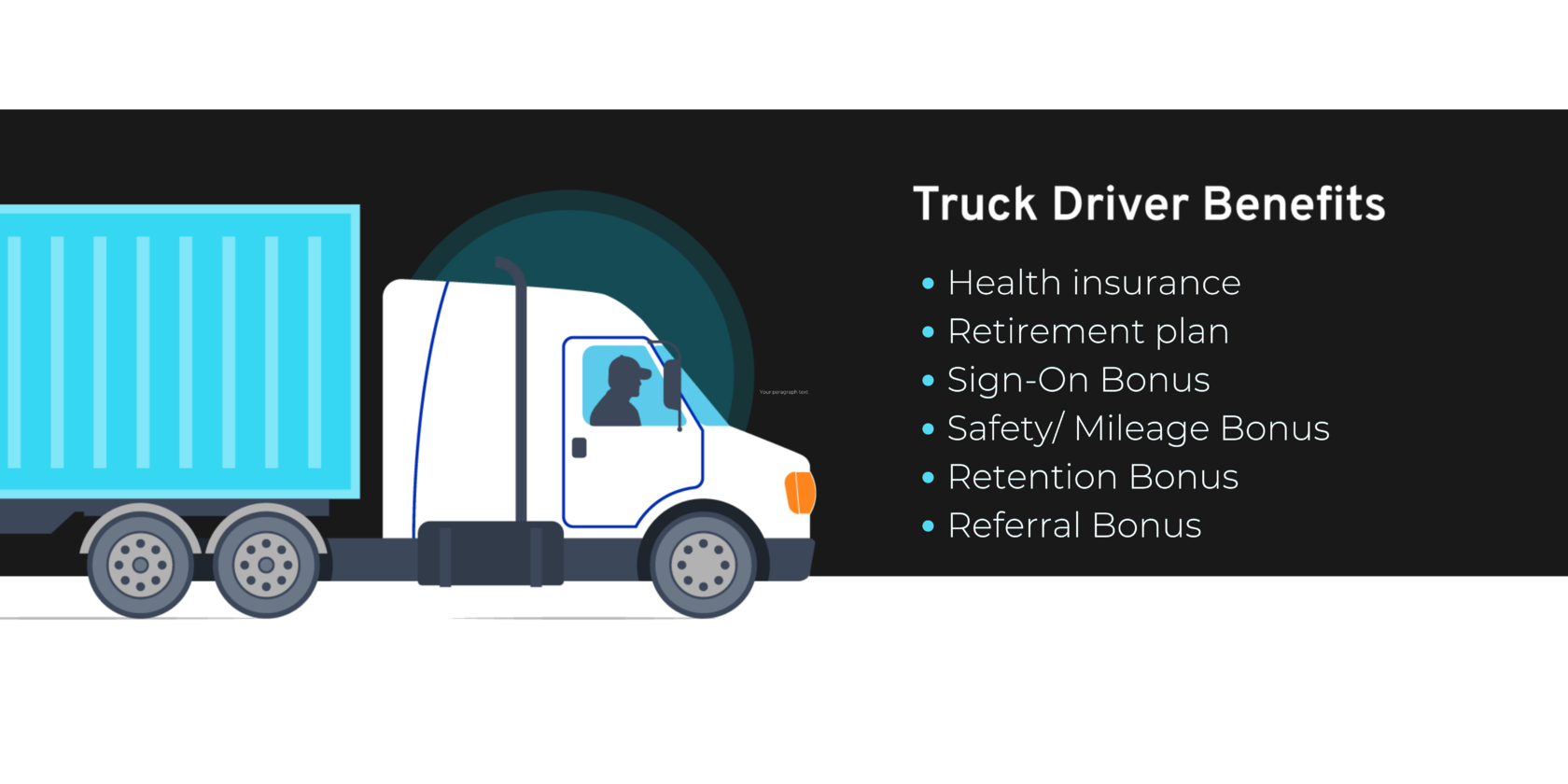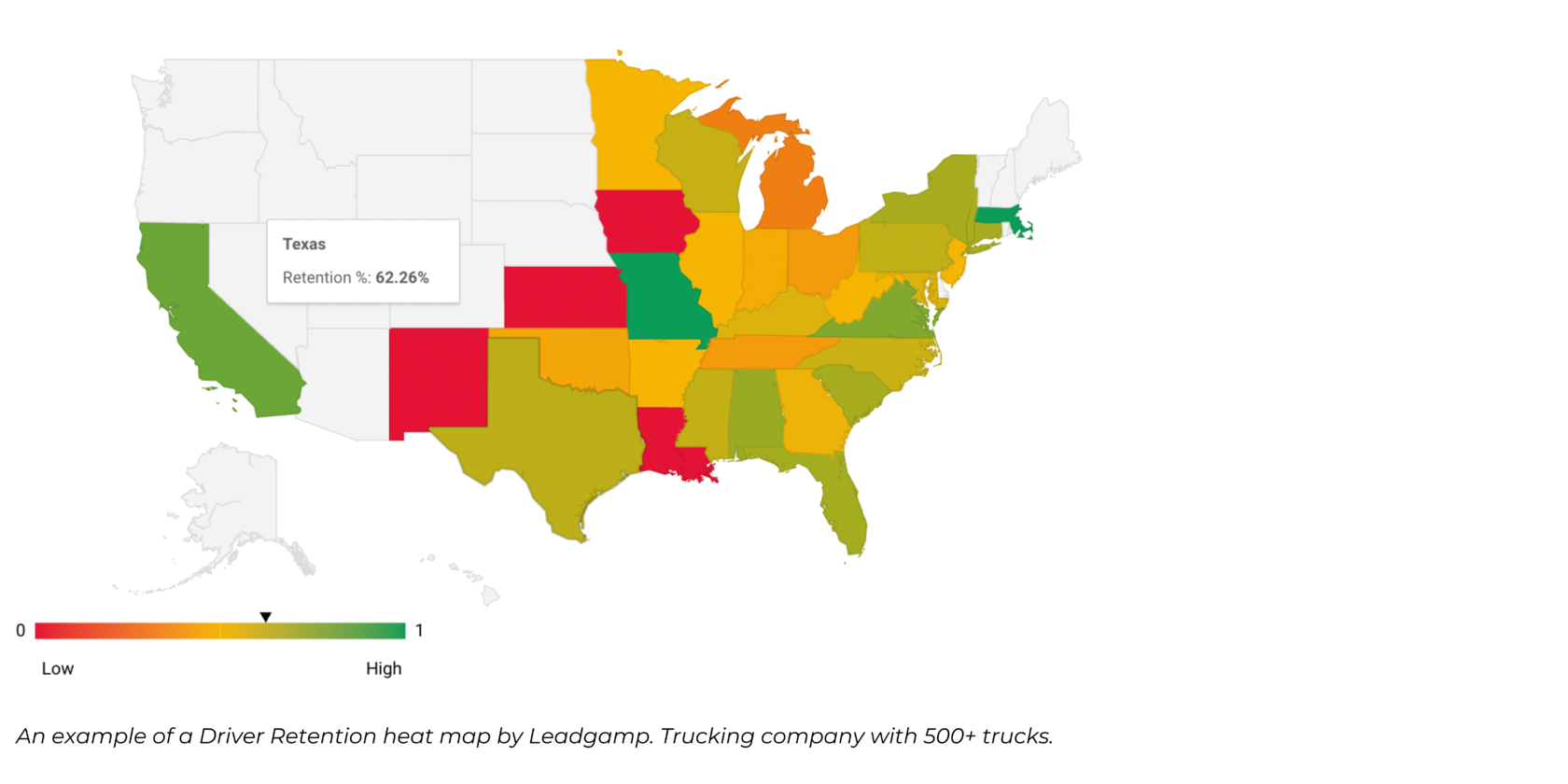Online sources estimate truck driver turnover rate in transportation at 89-90%. According to the Upper Great Plains Transportation Institute, the average cost of replacing a single truck driver is over $8,000. In some cases, it can be as high as $20,000.
That may seem over the top at first sight, but keep in mind that truckers stay in the industry - they just seek a perfect carrier to drive for. Let’s try together to find out who is to blame: unsatisfied job hoppers, the volatile industry, or something else?
On the one hand, there’s a significant shortage of tractor trailer drivers, and it’s a growing tendency. On the other, CDL license holders quit for specific reasons, thereby contributing to truck drivers turnover.
The perfect driver for your fleet is just a few clicks away. Find and hire qualified candidates effortlessly with the Trucking Talent online platform. Try it for free now.
Average Age of a Truck Driver
Let’s review some stats provided by Zippia to delve deeper into the issue.
The average age of a truck driver in the USA is 47 years old. 72% of commercial truck drivers are 40+ years old or older, 19% are between the ages of 30-40 years, and 9% are between 20-30 years old. So, it’s quite obvious that the workforce is aging and retiring, while fresh blood is surging quite slowly.

Trucking Lifestyle
Gone are the times when the trucking lifestyle was associated with joyful adventure and a way to fulfill the American Dream. Moving freight is a stressful, sedentary job coupled with highway hypnosis and chronic fatigue. Other health issues include mental health problems induced by isolation and loneliness.
Did you know that a truck driver is 10 times more likely to be killed on the job than the average American worker, according to federal data? Very little romanticism about the profession is left after you’ve gained some essential hands-on driving experience.
In today's world, all truck drivers use social media. Discover the power of social media for truck drivers in our comprehensive article. Learn how to leverage platforms like Facebook, LinkedIn, and Twitter to connect with potential candidates and build a strong team.
Inadequate Compensation
According to Zippia, the average truck driver salary is $64,512, which equates to $31.02 hourly rate. Importantly, few truck driver positions are paid by hour, while the industry standard is pay-per-mile basis. Moving loads involves lots of niche skills, unpaid work, and rarely any overtime or detention compensation, just to name a few. Besides, perks and benefits aren't standard and greatly depend on the carrier and employee tenure.

Limited Career Progression
In the trucking industry a hierarchical setup typically divides drivers and management distinctly. Drivers might see few chances for upward mobility, except for roles like owner operators or fleet managers, which might not match their ambitions. Also as technology advances in trucking, drivers fearing automation's impact on job security might be dissuaded from long-term industry commitment.
Poorly Maintained Equipment
Inadequately kept equipment leads to a range of difficulties (unpredictable downtime, delays, and job frustration among others) that create a negative work environment and impact driver satisfaction, safety, and overall well-being. Drivers who consistently face these issues are more likely to seek opportunities with companies that prioritize their safety, offer better equipment, and provide a more positive and supportive work experience. This, in turn, can lead to higher truck drivers turnover for companies that neglect equipment maintenance.
Carriers' Stringent Hiring Criteria
Very often it’s carriers themselves that drive turnover rate in the trucking industry by setting the bar too high for potential drivers. Some candidates might not meet the strict hiring criteria, even if they have the potential to become top-talent drivers. This can result in higher rejection rates and discourage qualified individuals from pursuing a trucking career. Furthermore, such an approach to recruitment might unintentionally exclude potential drivers from diverse backgrounds who could contribute positively to the industry. This can hinder efforts to promote inclusivity and diversity within the carrier's workforce.
At the same time, existing drivers might feel increased pressure due to the shortage of qualified new hires. This can result in overwork, stress, and dissatisfaction among current drivers, making them more prone to considering other job opportunities.
Rigorous Government Regulations and Compliance
Transportation is subject to a complex web of federal and state regulations (hours-of-service regulations, mandatory rest periods, safety and vehicle inspections, among others). Navigating these rules requires continuous learning and can be overwhelming. Drivers might feel frustrated and burdened by the administrative tasks required to ensure compliance. And in parallel, the fear of facing strict penalties, even for unintentional infractions, can result in job loss or financial strain for drivers.
Even though the picture may seem grim, luckily, there’re truck driver retention strategies introduced and adopted by multiple trucking companies that can improve the situation. Let’s touch on some of them.
Company Culture
If you haven't figured out how to reduce the truck driver turnover rate, you should start with the company culture. It’s a multi-level, interlocking entity that underpins the whole company and ensures its long-term success. An outstanding company culture is critically important to make each trucker feel valued and appreciated.
It’s crucial to secure a thriving environment based on a ‘work hard, play hard’ attitude backed up with bonuses, awards, recognition programs, and get-together events.
New hire onboarding and training is a great opportunity to showcase your company culture and values because first impressions are half the battle. Check out this informative article on ads for truck drivers. It's packed with valuable insights into the how advertising plays a crucial role in recruiting truck drivers.

Clear Communication on All Levels
Open and transparent communication fosters trust between drivers and other team members, including dispatchers, supervisors, and higher management. Regularly sharing important information, addressing concerns, and involving drivers in decision-making processes can make them feel valued and engaged as well as prevent potential conflicts.
In particular, one of the efficient truck driver retention ideas is to introduce a dedicated driver satisfaction board that handles complaints, collects drivers’ feedback, and conducts satisfaction surveys, as well as enter/exit polls.
Competitive Compensation Package
Competitive wages and benefits are essential for attracting and retaining drivers. This includes fair pay rates, bonuses, health insurance, retirement plans, and other incentives that demonstrate the company's commitment to its drivers' financial well-being.
Here’re some types of bonuses to reward truck drivers:
- Sign-On Bonus
- Safety Bonus
- Retention Bonus
- Mileage Bonus
- Referral Bonus
- Driver of the Month/Year Bonus

Flexibility and Focus On Driver’s Core Competencies
Flexible scheduling options can accommodate drivers' personal needs and improve their work-life balance. Offering choices in routes, home time, and shift preferences can boost job satisfaction, which is one of the most appealing truck driver retention strategies.
No touch freight (or bonuses for loading/unloading freight) and no forced dispatching can be game-changers. While slip seating can become a stumbling point for OTR and regional drivers because trucks literally turn into their homes. Offering dedicated runs and assignments is a great way to make truckers feel appreciated and comfortable.
A good idea is to keep truck drivers focused on driving and moving loads, while allowing your back office to handle administrative tasks, such as communicating with shippers and managing paperwork.
Quality Equipment
Obviously, equipment that does not break down is a utopia, but having a well established maintenance service is definitely an ace in the hole.
Regularly servicing trucks, investing in newer models, and keeping them clean and well-maintained can result in fewer breakdowns, increased driver safety, and overall higher job satisfaction.
Professional Development and Career Pathways
Every employee seeks growth, whether in terms of promotions or personal skill development. Offering driver training programs, allowing drivers to attain higher qualifications, and creating a clear path for advancement within the company can boost driver morale and decrease turnover.
It's essential to recognize that every driver's potential goes beyond driving.
Creating programs like "Driver to Owner-Operator" or "Driver to Fleet Manager" transitions can provide drivers with growth and business opportunities they might not find elsewhere.

Benefits Beyond Salary
Additional perks like discounted gym memberships, counseling services for mental health, and well-being workshops can be compelling to potential drivers. Financial wellness programs, tuition assistance for their children, or family support initiatives can further enhance the offer and make drivers feel that the company truly cares about their overall well-being.
Moreover, addressing health concerns related to the trucking lifestyle is essential. Considering sleep apnea treatments, healthy eating initiatives, and driver wellness programs can play a pivotal role in retention.
With 5 years of expertise in the niche of truck driver recruitment, we've naturally cultivated a unique approach to retention. Our clients benefit from comprehensive dynamic reporting grounded in in-depth recruitment analytics. This ensures they secure top-talent drivers who remain with their company for extended periods. Our reports provide retention and turnover insights in terms of:
- Hiring areas
- Candidate generation sources
- Company divisions
- Overall driver acquisition costs

Our approach sets us apart from other agencies. We don't solely focus on the Cost per Lead, nor do we confine ourselves to the Cost Per Hire. Instead, we allocate our clients’ budgets to ensure they hire drivers who deliver the most value to their operations.
Our reporting is 100% customizable to meet our clients’ needs, with options to include retention data specific to individual recruiters, dispatchers, or safety managers.
To summarize, the trucking industry faces a high turnover rate due to a myriad of challenges. These range from an aging workforce and the harsh realities of the trucking lifestyle to inadequate compensation and concerns about job security amidst technological advances. However, solutions exist. Cultivating a strong company culture, fostering open communication, offering competitive compensation, and ensuring well-maintained equipment are all pivotal strategies in retaining drivers. Investing in their professional development, well-being, and ensuring a work-life balance can further enhance retention rates. As we've highlighted with our unique approach, understanding the intricacies of driver retention through dynamic reporting can significantly improve recruitment and retention strategies. For carriers, adopting these practices can be a game-changer, ensuring trucks stay on the road and businesses thrive.
Looking to expand your trucking team? Check out our comprehensive guide on how to hire truck drivers. This article covers everything you need to know, from crafting compelling job listings to conducting effective interviews. Get on the road to finding the best talent for your fleet!




